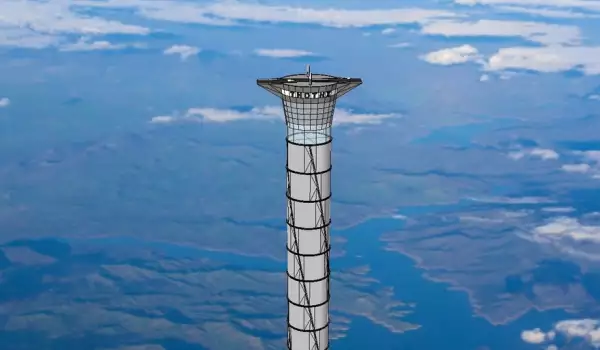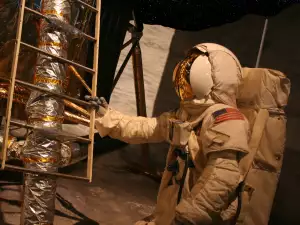In the future, astronauts going on dangerous missions to explore the boundlessness of the Universe will be able to launch directly from the stratosphere. This will happen if the ambitious project of the Canadian company Thoth Technology for building a 12.5 mile (20 km) high tower is realized.
The British newspaper the Independent writes that the entrepreneurial Canadians have managed to patent the project for this gigantic construction in the US patent office. The plan is for there to be an enormous elevator in the tower which will carry the astronauts to the uppermost layer of the atmosphere.
If it finds the financing, the tower will be built using pneumatic tension and placed in a remote and low-populated region on the planet's surface. The most suitable locations for the project listed are the Canadian North, Nevada, New Mexico or Siberia.
If the ambitious plan of the Canadian architects comes to fruition, the tower will understandably become the highest rising object on our planet - man-made or natural. Currently, the tallest building is the Burj Khalifa in Dubai, reaching 2721.7 ft (829.8 m). Once built, the space tower will be 21 times taller than it.
The initial estimates by Thoth Technology predict a minimum of $5 billion needed for the construction of the tower. But experts have calculated that this tremendous sum will be paid off quickly because the tower will provide significantly easier access to space.

It will reduce the energy needed to send shuttles into Earth orbit by 40% and reduce time and other resources for starting missions by 70%. The tower will also provide secondary benefits such as electricity from a wind generator and profits from tourism.
Spacecraft will launch into orbit from the top of the tower in a single stage, returning to the top to refuel and relaunch, says inventor of the space elevator concept Dr. Ben Quine.
Of course, the ambitious undertaking is only in its initial stage. Architects are still facing several serious challenges. The most problematic of these is the Armstrong limit. According to it, the human body cannot endure altitudes higher than about 12 miles (19 km) in an unpressurized environment since the outside pressure is so low that it would cause the water in the blood to boil.









